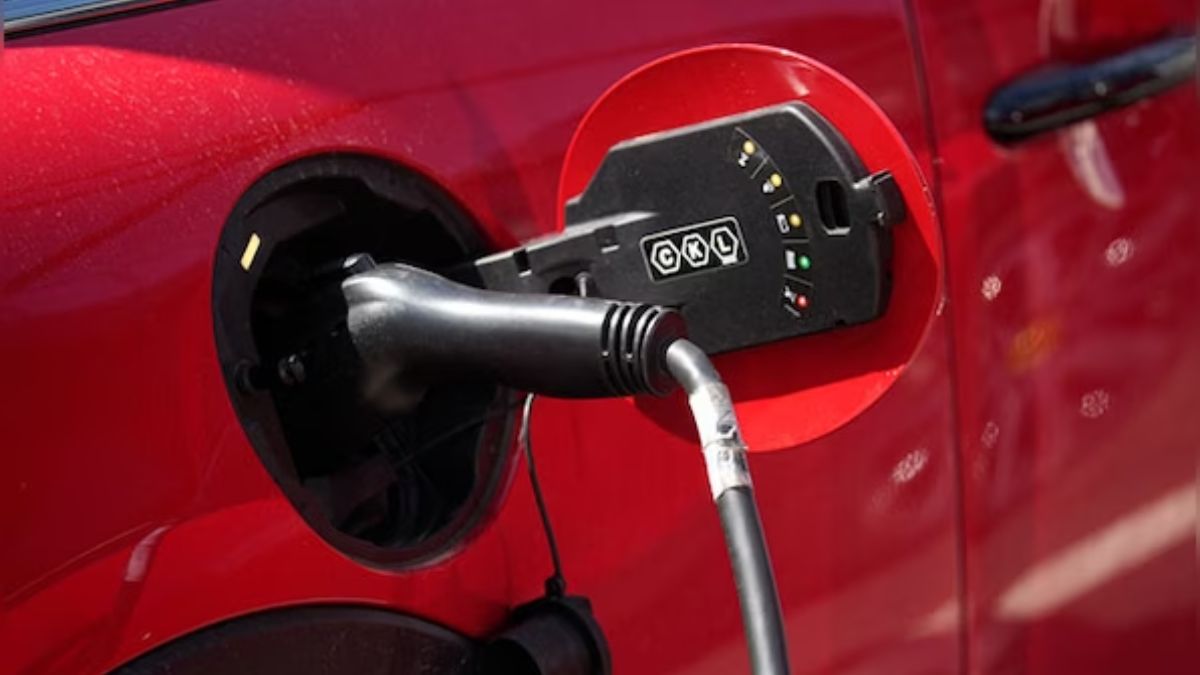China has taken India to court over electric vehicles (EVs).
Beijing has moved the World Trade Organisation (WTO) against India over its subsidies for electric vehicles and their batteries.
China’s Commerce Ministry, which filed the complaint, has claimed that it gives India’s domestic industries an unfair advantage. The ministry has vowed to take “firm measures” to effectively safeguard the legitimate rights and interests of its domestic industries.
The development comes in the backdrop of India announcing it will create a National Critical Mineral Stockpile (NCMS) for rare earth materials after China announced export controls. According to the latest guidelines announced by China’s ministry of commerce, any component containing rare earth magnet exceeding 0.1 per cent of the total value will henceforth require export approval from local authorities with effect from November 8.
Around 85 per cent of the world’s refining of rare earth materials is done in China. US President Donald Trump has already slapped a 100 per cent tariff on China for its curbs on the export of rare earths, saying it cannot be allowed to hold the world hostage.
But what do we know? What does this mean?
Let’s take a closer look:
What we know
China, in its complaint to the trade body, has said India’s subsidies for EVs hand an ‘unfair advantage’ to its businesses. It added that it also undercuts China’s national interest in international trade.
China, which currently dominates the global EV market, accounted for around two-thirds of the sales in September with about 1.3 million units. China’s BYD, a top player in the global EV market, outsold Tesla for the first time in Europe earlier this year, in what analysts said was a massive development.
China is the world’s biggest car market and accounts for more than half of global EV sales, including battery-electric vehicles and plug-in hybrids.
The Chinese Commerce Ministry has alleged that the measures by India violate several WTO obligations, including the principle of national treatment, and constitute import substitution subsidies, which are explicitly prohibited under multilateral trade rules.
What is India doing?
According to reports, India, among the major nations of the world, currently provides the highest subsidies on electric cars. India’s bestselling electric vehicle, the Tata Nexon, gets subsidies of around 46 per cent of its sales price.
Meanwhile, China offers a 10 per cent subsidy for its top models, Korea gives 16 per cent, Germany 20 per cent, and Japan and the US offer 26 per cent.
However, India’s EV sales remain minuscule, with such cars accounting for just two per cent of the total market.The Centre has implemented a slew of actions to increase domestic production of EVs, including an Electric Vehicle Policy and the Production-Linked Incentive (PLI) scheme.
India is also currently promoting the Faster Adoption and Manufacturing of (Hybrid and) Electric Vehicles (FAME-II) scheme to promote EVs. India has also introduced the Rs 2,000-crore PM Electric Drive Revolution in Innovative Vehicle Enhancement (PM eDRIVE) scheme as a follow-up to the FAME-II programme. Under this scheme, the Centre will subsidise 80 per cent of the cost of public fast-charging stations for EVs across India. In certain instances, it may subsidise 100 per cent of the cost.
The Centre has said e-trucks, e-ambulances, e-buses, and charging infrastructure will be subsidised until March 2028. Meanwhile, subsidies for electric two-wheelers, e-rickshaws, electric three-wheelers, and electric cars will end in March 2026.
The development also comes as India’s auto sales in September hit a record high thanks to GST rate cuts coupled with the festive season. Sales of cars, scooters, motorcycles, and three-wheelers hit their highest-ever numbers in September. Passenger vehicles saw an increase of 35 per cent, 2.2 lakh sales compared to 1.6 lakh sales last year, while two-wheelers witnessed a 36 per cent increase in sales of 8.3 lakh units this year compared to 6.1 lakh units last year.
Why is China doing this?
China’s complaint about India’s reported EV subsidies comes as Beijing seeks to boost exports of its electric vehicles to India. This follows the two countries’ initiative to normalise relations after a five-year freeze in ties due to the Eastern Ladakh military standoff.
Considering the size and scope of India’s auto market, Chinese EV automakers see it as a major source to expand sales.
According to recent reports, facing overcapacity with large production of EVs and declining domestic sales and profits amid price wars, Chinese hybrid car makers like BYD are looking for overseas markets, especially in the EU and Asia.
BYD is getting strong competition from smaller domestic rivals such as Geely, Leapmotor, Xpeng and Xiaomi – all of which outperformed BYD domestically last month.
According to data from the China Passenger Car Association (CPCA), 50-odd EV builders in China exported a total of 2.01 million pure electric and plug-in hybrid vehicles overseas in the first eight months of the year, up 51 per cent from the same period a year earlier.
But the Chinese EV makers are facing pushback abroad, as the EU has imposed a 27 per cent tariff on Chinese EVs to limit their sales in the bloc.
When asked about the issue, Commerce Secretary Rajesh Agrawal said that the ministry will look at the detailed submissions made by China. An official said that China has also filed similar applications against Turkey, Canada, and the EU. “They have sought consultations with India,” the official said.
Seeking consultation is the first step of the dispute settlement process under WTO rules. If the consultations requested with India do not result in a satisfactory solution, China can request that the WTO set up a panel in the case to rule on the issue raised.
With inputs from agencies
)